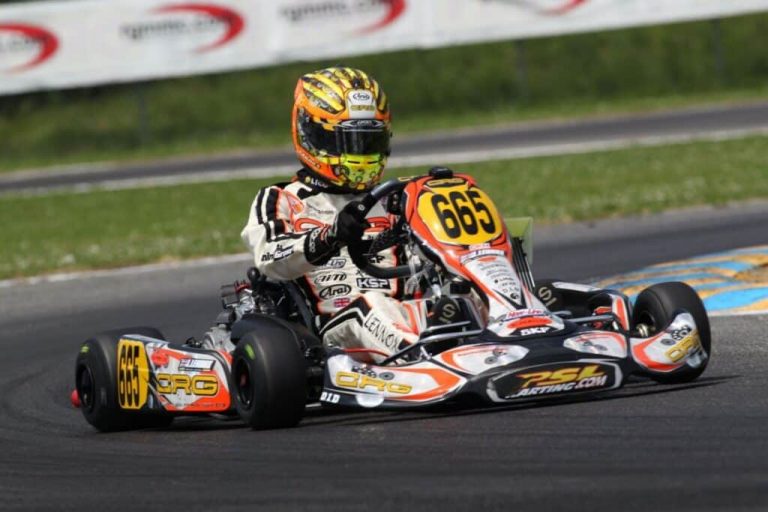Why Do F1 Cars Look The Way They Do?
I am sure you have already asked yourself: why all F1 cars look the same? Why do they look the way they do? Why teams and manufacturers cannot do what they please? I asked myself this same question and searched the answer for you here.
The short version of the answer is that the FIA has put so many regulations in place about everything that designers and engineers don’t have much left to work with. So all cars look pretty much the same. Before the 70s, few technical regulations were in place. Teams could have a very different design from one another. Take for instance the famous 6 wheeled Tyrell.
Slowly, the FIA put in place regulations on everything: from rear wings to tyre size leaving few areas were designers could express their creativity. However, there are still notable differences between cars following the margins that the FIA left the designers with.
Take for instance these pics:

You can see that there are a lot of differences between the cars such as the shape of the front noses, the shape of the front wings, the air intake, etc. F1 cars are not as identical as it seams.
We will dive into this subject in detail by first highlighting the history of the FIA regulations and the evolution of F1 cars’ design in relation to it until today. Then, we will look into the margin left to designers and finally compare in detail all 2020 F1 cars.
Ready? Go!
History of F1 Design Regulations And Its Impact On Car Design
From 1950 to 1960
Between 1950 and 1960, there were almost no design rules. F1 did not care much about safety and design restrictions. The few rule changes that were made were about engine specifications. In 1953, regulations stated that the allowed engines were to be 1500cc with a compressor and 4500cc for naturally aspirated engines.
Engine rules changed again in 1954 for allowed engine sizes of 750cc for engines using compressors and 2500cc for naturally aspirated engines.
Designers were free to creat the car they wanted and it looked like this:

From 1961 to 1970
In 1961 and throughout the 60s, the FIA started implementing more and more design and safety rules under the pressure of drivers who sought to have safer races. Main ones were:
- Engine sizes were increased to 1500cc for compressed ones and to 3000cc for naturally aspirated ones.
- A minimum weight of 450 kg was introduced, subsequently changed to 500 kg.
- A roll bar was required.
- Double braking systems were made mandatory.
- Reverse gear was introduced.
- A cockpit design for quick evacuation was mandatory.
- All aerodynamics part must be immobile and fixed to a sprung part of the car.
- Height and width restriction banning high wings.
As a result, compared to the 50s, cars in the 60s had a pointier and longer nose, were shorter in the back and started using a low rear wing by the end of the 60s.

From 1971 to 1980
The number of regulations started to accelerate heavily in the 70s. Many changes were made. Again, to name the most important ones:
- Minimal weight set to 575 kg.
- Safety bladder fuel cell tanks introduced.
- Crushable structures around fuel tranks.
- Introduction of the rear light.
- Mandatory minimum cockpit dimensions.
- Special specifications for fuel tanks.
- Airboxes on top of cars were banned.
- Limitation on engine cooling.
- Introduction of pedals and dashboards safety structures.
- Fron roll bar.
- A central and unique fuel tank instead of 2 or 3 used previously by most cars.
- Bigger cockpit opening and mirrors introduced.
As a result cars were not equipped with the high air intakes and started to become bulkier with big front wings. You can the evolution of the airbox ban in 1976 on car design here:
| Ferrari 312 B3 in 1974 | Ferrari F 312 T in 1979 |
 |
 |
From 1981 to 1990
Despite being safer, F1 has known many deaths in the 80s pushing the FIA to be even tighter on regulations. Here are the main ones in the eighties:
- Minimum weight reduced to 500 kg.
- Ban on ground effect (deemed too dangerous).
- Bann on more that 4 wheeled car.
- Ban on four-wheel drive.
- Fuel tank required to be at the centre of the car.
- Rear wing size limit put in place.
- Ban on turbo engines deemed too powerful.
- Overhead air intake allowed again.
These changes resulted in a big impact on design making F1 cars less bulky with the appearance of the withdrawn side air intakes. Here is an F1 before and after the ground effect ban:
| An F1 before in 1982 | An F1 in 1984 |
 |
 |
From 1991 to 2000
Before 1994, F1 had known 12 years without a single fatality. After the San Marino 1994 Grand Prix where Senna and Ratzenberger died during 2 consecutive days, pressure was put on the FIA again to make F1 safer.
Measures taken were:
- Larger mirrors.
- Narrower front noses going from 150 cm to 140 cm.
- Rear overhang reduction to 50 cm.
- Rear tyre width reduced to 38 cm in order to reduce speed and grip.
- Introduction of 14 mm grooves to tyres.
- Overall car width reduced to 1.8 m.
- Rear wing reduced to 80 cm.
- Front wings width can’t exceed front wheels.
- Increase of front wheels height.
- Front wing endplate cannot be thicker than 10 mm.
- Distance between front end plates and flat bottom set to 40 cm.
- Longer and higher cockpit openings.
- Tethered wheels to the car to avoid flying parts in case of accidents.
- Ban on active suspension, ABS, 4 wheel steering and traction control.
To this day, F1 cars don’t have ABS or all-wheel drive. This is mainly due to the FIA trying to diminish the ways in which the drivers are helped. Gradually the impact of these changes started to diminish and we started seeing less dramatic changes to the external appearance of the cars. In the 90s, F1 cars started to resemble the cars we have today.
| Ferrari F1 car in 1991 | Ferrari F1 car in 1998 |
 |
 |
From 2001 to 2010
After successfully improving safety during the 90s, regulations were not changed as much as in the past. The main goals of the F1 leading instances were to improve the entertainment and try to put teams on an equal foot by limiting engine power for example. Main modifications were:
- Engines changed to 3L V10 and subsequently to V8 2.4L.
- Rear diffuser to be longer and higher.
- Minimum weight set to 600 kg during the race.
- Reduction of rear wing width from 1000 mm to 750 mm and increase in height from 800 mm to 950 mm.
- Reduction of the ground clearance of front wings from 150 mm to 50 mm and increase in width from 1400 mm to 1800 mm.
- Introduction of KERS.
Besides minor changes, F1 cars’ appearance did not change much during this decade.
| A Ferrari F1 in 2002 | A Brawn GP01 in 2009 |
 |
 |
From 2010 to 2020
The FIA followed up on their newfound goal to make F1 more “watchable”. New rules were implemented to further the direction the sport has taken over the previous decade. Here are the main implemented rules:
- Refuelling ban during the race.
- Front tyre width reduced to 245 mm.
- Ban on KERS, double diffusers, adjustable front wings and double DRS.
- Introduction of the adjustable rear wing (Drag Reduction System).
- Raise of exhaust tailpipes.
- New V6 1.6L Hybrid engines containing the MGU-K and MGU-H.
- Nose dimension change.
- Car width goes back from 1.8 m to 2 m.
- Minimum weight increased to 728 kg.
- Increased width of the front wing as well as tyres.
- Introduction of the HALO device.
- Ban on shark fins and T-wings.
These new set of rules change the F1 cars’ appearance on the rear wing, which now is equipped with the movable flip (DRS), and on the cockpit with the presence of the Halo protecting the driver.
| The 2012 Red Bull RB8 | The 2018 Mercedes AMG F1 W08 |
 |
 |
So you can see the design of an F1 car evolves according to the regulations put in place by the FIA. To sum it all up, you can see below a chart showing all F1 cars from 1950 to 2013.

2020 Car Design Comparison
Although cars are similar in appearance, we will compare here some basic features of the car and see that they are quite different. For example, the above-ground distance of the lowest part of the car changes drastically between teams.
| Car | Livery |
| Mercedes W11 |  |
| Ferrari SF1000 |  |
| Red Bull RB16 |  |
| Renault RS20 |  |
| Haas VF-20 |  |
| McLaren MCL35 |  |
| Racing Point RP20 |  |
| Alfa Romeo Racing C39 |  |
| Alpha Tauri AT01 |  |
| Williams FW43 |  |
The front wings, noses and air intakes are also not the same:

To Wrap It All
Yes, F1 cars look fairly similar. This is due to the many regulations that the FIA has put in place over the years. There are basically so many regulations that the designers don’t have much left to express themselves. Over the years, F1 cars’ design has changed drastically following the regulations changes put in place.
As of today, although cars look fairly similar, they are not exactly the same. There are important differences, as shown in the pictures above, mainly on the aerodynamics, the nose, front and rear wings and above ground height of the cars. There are many differences between the cars for the trained eye.







